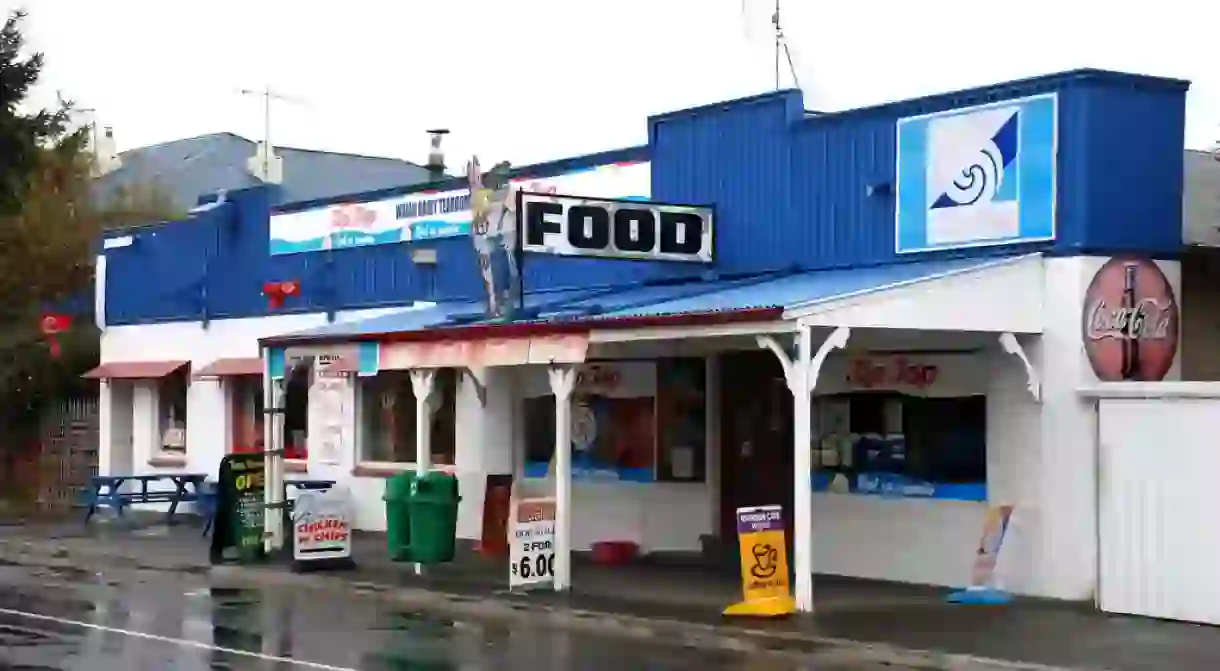A Brief History of New Zealand's Dairy Shops

A ‘dairy’ is what New Zealanders call the various mixed-grocery shops scattered around its towns, rural landscapes and cities. Many of these are found on street corners and are licensed to sell staples like milk, bread, eggs, newspapers, perishables and other everyday grocery items. Here’s how the humble dairy has, over the course of history, become a quintessential Kiwi icon.
The good old days
It was in the early 1900s that small shops known as ‘dairy produce sellers’ started popping up. These were the only stores in New Zealand allowed to sell milk, cream, cheese, butter and eggs, as well as being the only places allowed to operate on a Sunday.
The humble dairy’s expansion into a generalised grocery outlet came about during the depression of 1930s. At the time, cash-strapped Kiwis started to convert their own houses into food shops, selling easily-handled goods like confectionery to make ends meet. These were mainly known as ‘cash grocers’ – but after the 1930s, the word ‘dairy’ was adopted as a generalised term that refers to all small grocery stores.

Traditional dairies expanded their range of goods in 1945, after a law was passed that basically put an end to other grocers opening on Saturdays. Because they were allowed to operate outside of typical business hours, it was only natural for dairies to become the evening or weekend go-to for all the daily essentials – though these shops did have a restricted list of items they were allowed to sell. For a time, dairies were even known to offer postage services.
The dairy as a kiwi icon
Throughout the years, many dairies have kept their old school charm. Signage plastered with images of milk and ice cream have been a common feature of these convenience stores for more than three decades – in fact, it’s not uncommon to find shops that have remained largely unchanged since opening.

Since their inception, dairies have become as much of a pop culture icon as they are a daily-life essential. The shops have featured in some adverts appealing to the local sense of cultural identity, and hold a nostalgic place in many hearts. It is not uncommon to hear stories about kids heading to the dairies for some lollies (what New Zealanders call candies/sweets) or Tip Top ice cream. Many people still say they’ll quickly ‘pop into the dairy’ for some bread and milk when they’re running short. The stores are also known for being some of the go-to places to grab a traditional New Zealand meat pie.
On the operational side of things, dairies have enabled many migrants – most notably from India – to enter the workforce. Some of these shops became inter-generational ventures, with children taking over from their parents when they grew up, but many dairy owners were doing their jobs to give their kids a good education and better life opportunities. A 1994 study found that 227 out of the 269 dairies in suburban Auckland were owned and operated by Indians. In 1997, Jacob Rajan created his award-winning play Krishnan’s Dairy, paying tribute to New Zealand’s Indian communities as well as the established tradition of the Indian corner shop.

The struggles of the past and present
Despite being a relatively easy business to get into, dairies are not particularly profitable. They make money by being open long hours every day – historically, many shop owners would be working around 90–100 hours each week. As small operators, they are unable to get bulk discount on grocery goods, meaning mark-ups have also become quite common.
In contemporary times, a blurring of what constitutes a ‘dairy’ has brought a few issues in regulating these traditional outlets. The 1989 Sale of Liquor Act prohibited alcohol from being sold in ‘any shop of a kind commonly known as a dairy’, without expanding on what that means. This led to various shops changing their stock in order to qualify for liquor licences – which in turn created a proliferation of stores that only differentiated from dairies through the fact that alcohol was sold in their premises. Years later, the Sale and Supply of Alcohol Act 2012 tried to address this loophole by ensuring that dairies and convenience stores are barred from selling alcohol – a law that attracted criticism from shop owners.
With increased competition between bigger players like supermarkets and gas stations, dairies began to disappear. The introduction of deregulated shopping hours in the 1990s enabled supermarkets to stay open for longer and other convenience stores to extend the range of goods they were selling. By the 2000s, dairies had completely lost their competitive advantage and have since been steadily in decline. Still, the quintessential dairy continues to chug along – despite the fact that many believe it to be as dying business.














